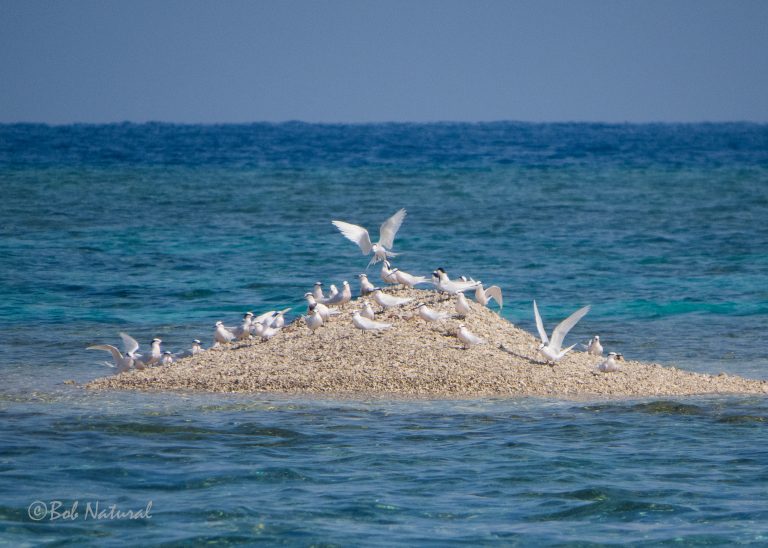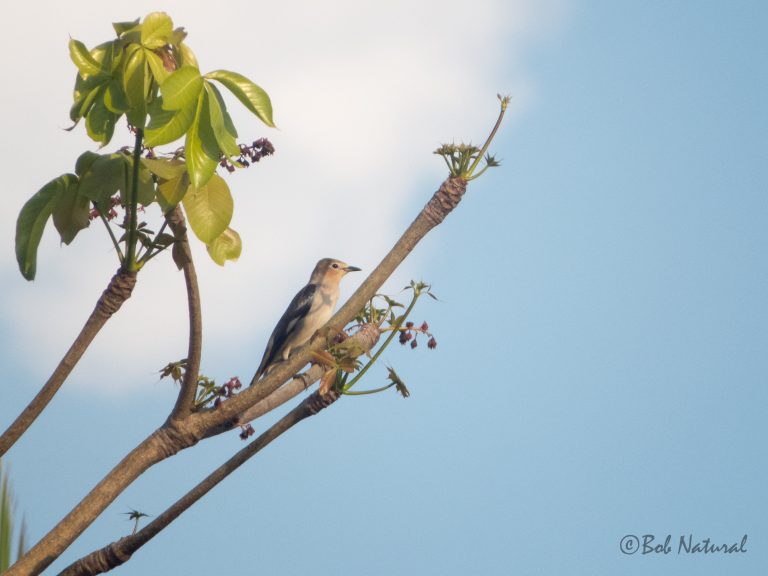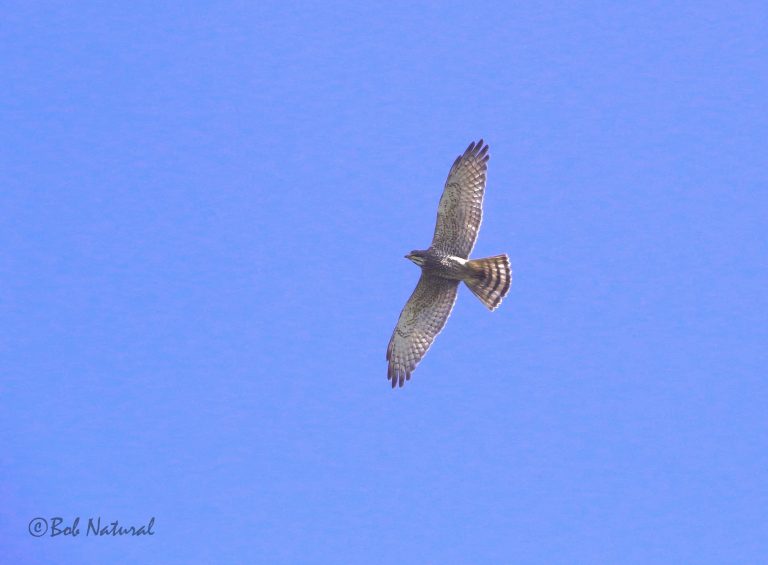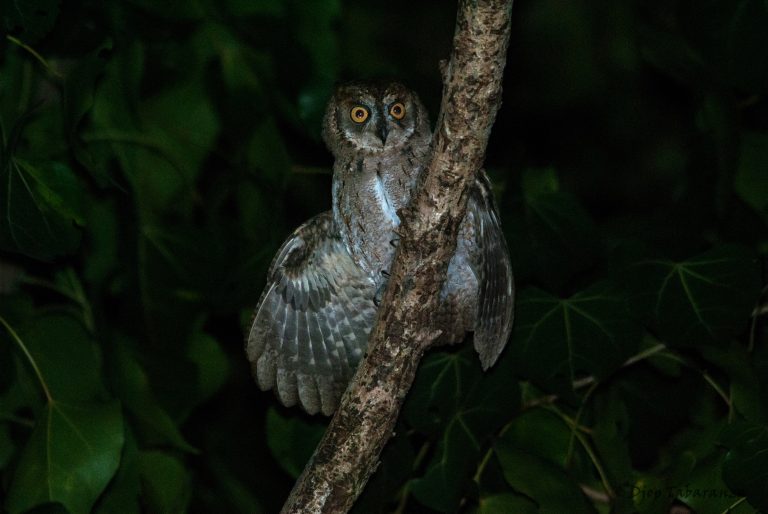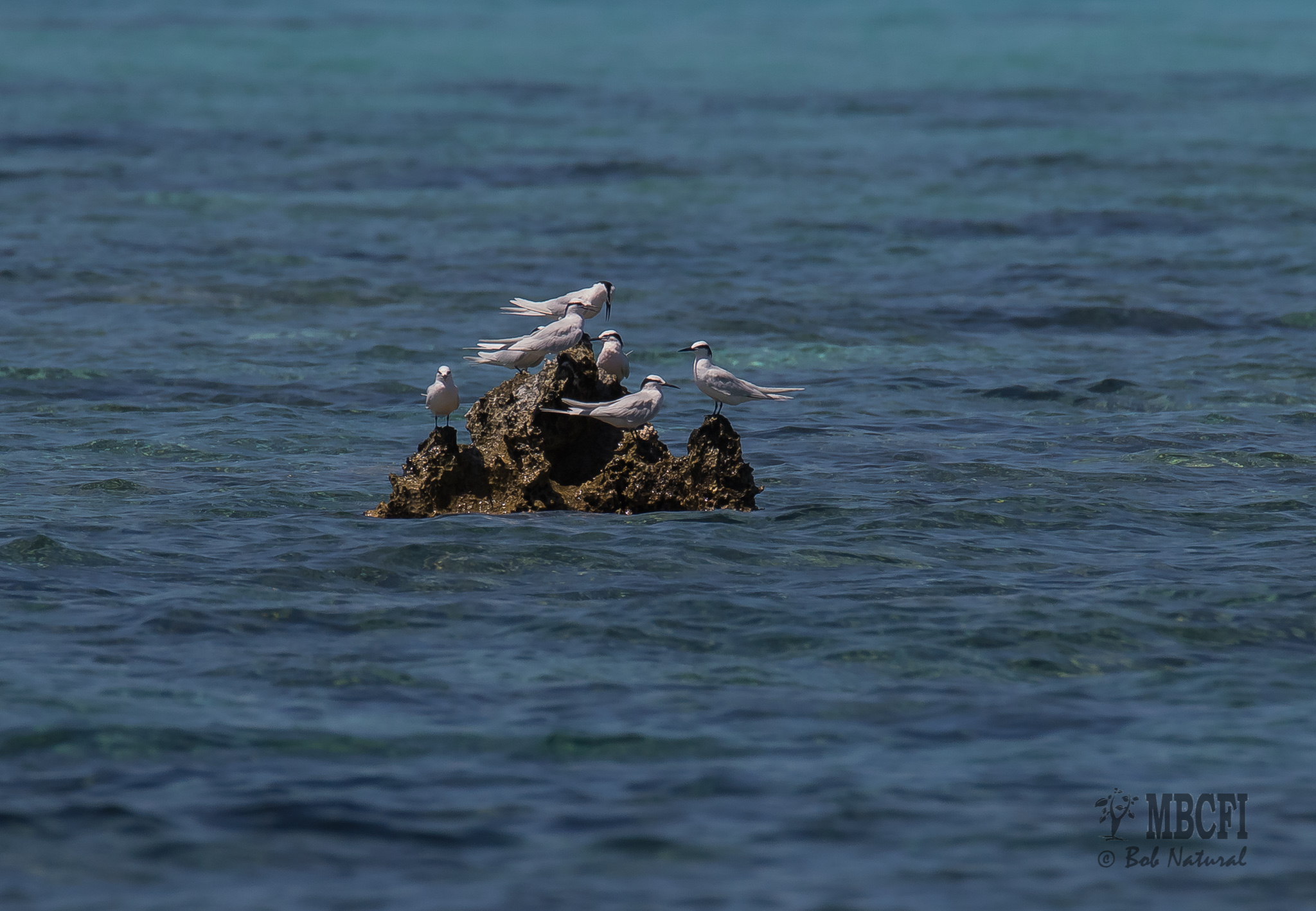birds
Winged Wonders: The Seabirds of Apo Reef
In the heart of Apo Reef Natural Park (ARNP), the skies come alive with the graceful dance of seabirds. Among the limestone islands, two species of terns make their seasonal home: the Black-naped Tern (Sterna sumatrana) and the Bridled Tern (Onychoprion anaethetus). Arriving as early as March, their numbers swell to a peak in July, creating a spectacular display of nature’s rhythm.
The Black-naped Tern is a slender, elegant bird, about 30 cm long with a wingspan of 21-23 cm. Their black beaks and legs contrast strikingly with their white face and breasts, while their grayish back and wings add a subtle touch. Known for their long, forked tails and yellow-tipped bills, these terns are a vision of grace as they soar over the waters.
The Bridled Tern, slightly larger at 30-32 cm in length and a wingspan of 77-81 cm, is a medium-sized, robust bird. With dark grey upperparts and pristine white underparts, the Bridled Tern is striking. Their white forehead, eyebrows, and distinctive collar highlight their appearance. This migratory tern prefers marine habitats, distinguishing it from many of its kin.
Beyond terns, Apo Reef Natural Park hosts a variety of bird species. Residing on the island is the famous Nicobar pigeon (Caloenas nicobarica) which is known for its vibrant blue, green, and gold plumage. When this cautious species unveils itself, it is quite a sight to behold. Another prominent species is the Mantanani scops owl (Otus mantanensis). This island dweller, with a size of around 18 cm long and a wingspan of 15.5 cm, feeds on insects. Due to its limited range and forest degradation, it is listed as Near Threatened by the IUCN, along with the Nicobar pigeon.
New records for Apo Island include the Long-toed Stint (Calidris subminuta) and the Eurasian Curlew (Numenius arquata). The former is listed as Least Concern, while the latter is Near Threatened, each observed once, highlighting the island’s critical habitat role.
The annual return of these seabirds underscores the importance of Apo Reef. The park’s management team closely monitors these populations, ensuring tailored conservation measures. Detailed bird sightings provide essential data to support these efforts.
Apo Reef’s seabirds are integral to the ecosystem, enriching its biodiversity and reflecting the marine environment’s health. Continued conservation efforts are crucial to ensure these avian marvels thrive. The work of the Apo Reef Natural Park – Protected Area Management Office is vital in preserving this natural heritage.
Image Gallery

